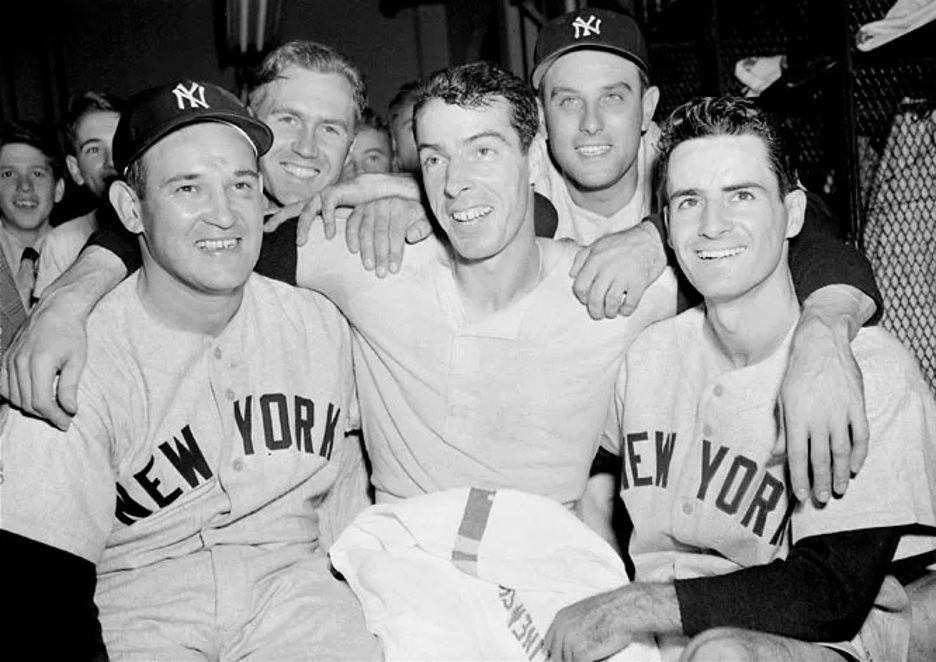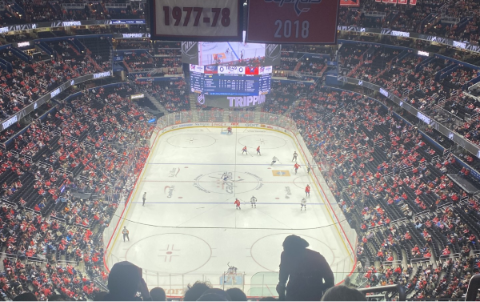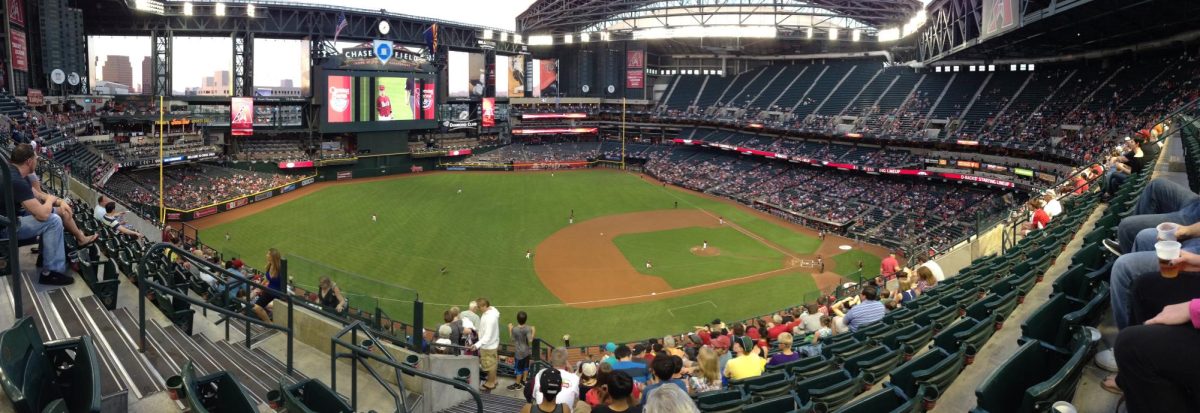The following represents the opinion of the student reporter and does not represent the views of Loyola University Maryland, the Greyhound, or Loyola University’s Department of Communication.
The “House that Ruth Built.” The pinstripes that adorned Ruth, Mantle, Gehrig, Jeter, Rivera, and another twenty-two players and managers inducted into the Baseball Hall of Fame, by far the most of any franchise. Murderer’s Row. Twenty-seven World Series Championships, including an improbable stretch from 1949 to 1953 where five straight World Series Pennants were raised in the Bronx. What do all of these things have in common?
They are all symbolic of the winningest franchise in North American sports. A team whose history and success means they need no introduction. The second thing that they have in common? Both these players and championships are very, very old. The Yankees are far removed from the days of Derek Jeter and Mariano Rivera, and even further removed from their last championship by over fourteen years, the longest ever for the world’s second most valuable sports organization according to Forbes.
Before the slow decline of the New York Yankees organization can be understood, one must start at the most recent time they peaked. The last championship parade came before the iPad in November of 2009 after the Yankees defeated the Phillies in the World Series. The lineup that cruised to a World Series title managed to produce quality results consistently. The 2009 Yankees had 10 players who played in over 100 games with eight of them producing an OPS, a statistic that takes into account the total number of bases a player gets and how often they get on base, above that of the average major league hitter.
The lineup was also balanced in terms of righty and lefty hitters: out of these 10 players were four lefties, two righties, and four players who could do both. The lineup could attack both right-handed pitchers, who typically have better numbers against righty hitters, and left-handed pitchers, who would normally fare better against lefties. This consistency extended to the Yankees’ starting pitchers in 2009. The four pitchers who carried the Yankees to a championship were half left-handed and half right-handed; more importantly, they each started over thirty games, a testament to the health and durability of their staff.
Thia has not been the case with the most recent era of Yankees baseball, which started with the arrival of top prospects like Aaron Judge and Gleyber Torres in 2017. The construction of their current roster does not have the same consistency and balance of championship-caliber teams from the past. Ever since the Yankees’ window of contention opened in 2017, the lineup has been unbalanced.
Looking at the Yankees’ roster since then, there have been few players that have had both batted from the left side, played over 100 games, and produced an above-average OPS. They had four in 2017, three in 2018, two in both 2019 and 2020, only one in 2021 and 2022, and none this past season.
The benefit to a righty-heavy lineup is that the Yankees have posted a 0.777 OPS, which is above average against lefty pitchers. However, they posted a 0.683 OPS against righty pitchers, which is well below average. This disparity is more troubling when one sees that the Yankees faced righty pitchers roughly eighty percent of the time. This lack of balance has had a direct correlation to a low-performing offense that struggled mightily since Major League Baseball stopped using baseballs that had different compositions of cork in the core to reduce drag and increase home runs. The Yankees were a top-three team in runs scored from 2017-2019 and have dropped off steadily since.
Aside from a lineup imbalance, the Yankees have zero consistency in who appears in their games. Most of this is largely due to injuries; the Yankees have been in the top 10 for how many players have been inactive on the injured list since 2017. Some stints on the injured list have been freak accidents. For example, Aaron Judge ramming his toe into an area of the wall without padding. However, a lot of it can be attributed to the Yankees trading and signing players who have a history of injury.
Two prime examples of this are pitchers Frankie Montas and Carlos Rodon. Montas, a pitcher the Yankees traded and gave up significant prospects for, was an utter disaster, pitching only 41 innings in a year and a half with a 6.14 ERA, how many runs a pitcher gives up over nine innings, while being injured most of the time. However, the trade looks more catastrophic considering the Yankees knew when they acquired Montas that he had an injury in his pitching shoulder.
While not acquired through the trade market, Rodon was signed as a free agent, and has greatly underperformed a year into his contract. His significant injury history was of little concern when the Yankees signed him for 162 million dollars until his arm and back injuries limited him to a 6.85 ERA in just 14 starts. Overall, only two pitchers made over 30 starts this year for the Yankees, compared to the four in 2009, creating a lack of consistent, quality pitching.
Offensively, the Yankees went into 2023 with many players well over the age of 28, which is the median age for major league players. DJ LeMahieu, who has multiple years remaining on his contract, is 34 and has struggled ever since he injured his toe in the fall of the 2022 season. Giancarlo Stanton is 33 and batted under 0.200 this season and has missed over half of the games he could have played for the Yankees since they acquired him. The team also went into the past two seasons with starting third baseman Josh Donaldson, age thirty-seven, only for him to be below average in 2022 and hit 0.142 while battling injuries before being designated for assignment by the team.
The Yankees signed and traded for players that were old, declining, and becoming more susceptible to injury, all while eating up sums of money that could have been spent on younger, more athletic, and higher-quality players. It’s an unsustainable model, especially considering five of the Yankees’ nine players in the opening day lineup spent a large amount of time off the field on the injured list. These injuries force the Yankees to call up minor league players who may need more time to develop into major league players, creating more weak spots in an unbalanced lineup.
There are other issues that many Yankees fans seem to think exist within the organization such as a lack of urgency, poor manager, and an over reliance on analytics, but none of it matters. You could have the hardest-working players, the best manager, and great analytics. Still, it means nothing if the players themselves are old, injured, and create an unbalanced lineup that makes it easy for opposing pitchers to get through. Until those issues are fixed, the lights of Yankee Stadium in the Bronx will be dim in the October playoffs.









































































































